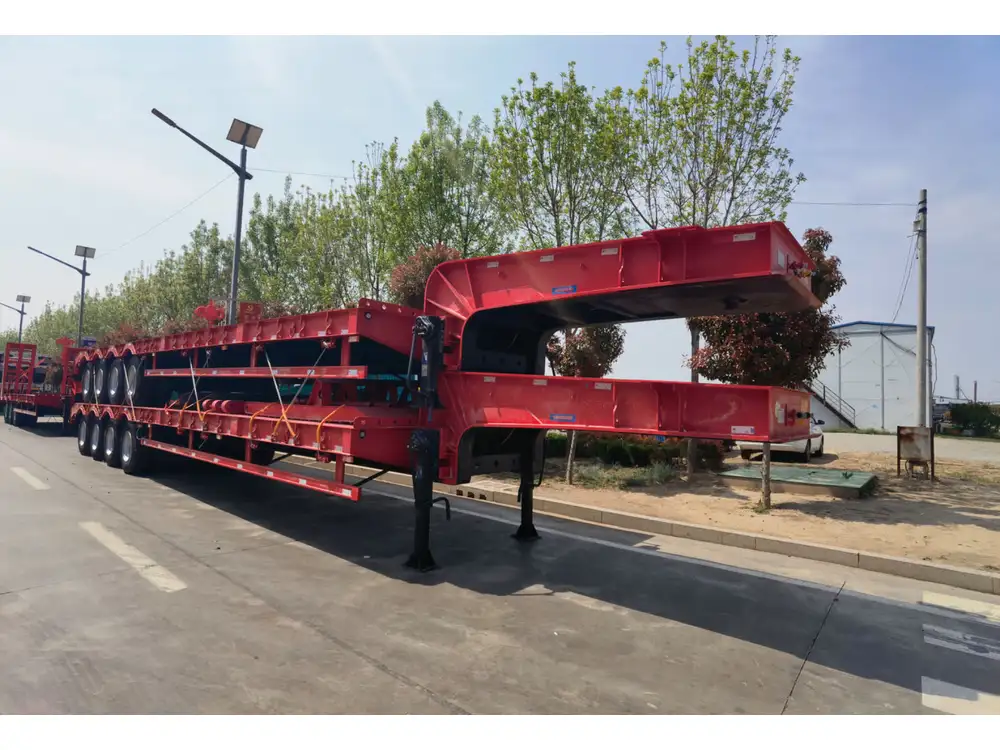The Antilock Braking System (ABS) has become an indispensable feature in modern semi-trailers, enhancing safety and stability during operations. Understanding how ABS works on a semi-trailer is crucial for operators, manufacturers, and fleet managers alike. Below, we delve into the components, functioning, and benefits of ABS, along with maintenance tips to ensure optimal performance.
The Essentials of ABS: An Overview
The main function of ABS is to prevent wheel lock-up during hard braking, which can lead to loss of steering control and increased stopping distance. This system employs various sensors, a control module, and hydraulic mechanisms to optimize braking performance.
Key Components of ABS
Wheel Speed Sensors: These sensors monitor the rotational speed of each wheel, providing real-time data to the ABS control module.
ABS Control Module: This is the brain of the ABS system. It processes input from the wheel speed sensors and activates the hydraulic valves accordingly.
Hydraulic Control Unit (HCU): The HCU modulates brake pressure to prevent lock-up, allowing the wheels to continue rotating even under heavy braking.
Braking System: The standard braking components, such as brake pads, rotors, and drums, work alongside the ABS to provide effective stopping power.

How ABS Operates on a Semi-Trailer
The operation of ABS in a semi-trailer can be broken down into a series of steps:
Normal Operation: During standard braking, the wheel speed sensors transmit data to the ABS control module. If the wheels are rotating normally, the braking force is applied as usual.
Detecting Wheel Lock-Up: Upon sudden braking, if the sensors detect that a wheel is decelerating faster than the others (indicating imminent lock-up), the control module intervenes.
Modulating Brake Pressure: The HCU reduces brake pressure to the affected wheel, allowing it to regain traction. This modulation occurs rapidly, sometimes up to 15 times per second.
Releasing and Reapplying Brakes: Once traction is restored, the system allows for normal braking pressure to return, providing a smooth deceleration and enabling the driver to maintain steering control.
Detailed Functions of ABS in Different Scenarios
Emergency Braking Situations
In emergency scenarios where rapid deceleration is required, ABS plays a crucial role. The system automatically manages the brake pressure to avoid skidding, offering the driver better maneuverability and control over the vehicle’s direction.
Performance: The technology ensures that drivers can steer around obstacles while braking, enhancing overall safety.
Feedback to Driver: When ABS activates, drivers may feel a pulsating sensation in the brake pedal. This is normal and indicates that the system is functioning as intended.

Adverse Weather Conditions
Driving in inclement weather increases the likelihood of wheel lock-up due to reduced traction. ABS significantly improves safety during these conditions:
Rain and Wet Surfaces: ABS helps maintain better contact with slick surfaces, reducing stopping distances and improving stability.
Snow and Ice: In icy conditions, ABS allows drivers to brake without compromising steering ability, minimizing the risk of skidding or sliding.
Advantages of ABS in Semi-Trailers
The integration of ABS into semi-trailers yields numerous benefits that enhance both safety and efficiency:
| Benefit | Description |
|---|---|
| Increased Safety | Reduces the risk of skidding and overturning. |
| Better Control | Maintains steering ability during hard braking. |
| Shortened Stopping Distance | Improves stopping power on slippery roads. |
| Reduced Brake Wear | Prevents wheel lock, extending the lifespan of braking components. |
| Enhanced Traction Control | Allows for better handling in poor driving conditions. |
Maintenance of ABS on Semi-Trailers
Regular maintenance is essential to ensure the ABS on a semi-trailer operates at peak performance. Below are critical maintenance tips:
Regular Inspections: Periodically inspect wheel speed sensors, wiring, and connectors for any signs of wear or damage.
Hydraulic System Checks: Ensure that the hydraulic control unit is functioning properly and that brake fluid is at recommended levels.
Brake Component Maintenance: Regularly check brake pads, rotors, and drums for wear. Use quality parts to ensure compatibility with the ABS.
Diagnostic Tests: Conduct diagnostic tests using specialized equipment to check for error codes in the ABS system.
Training Drivers: Provide training to drivers on the operation of ABS and how to react when the system activates during driving.

Common Misunderstandings About ABS
ABS Guarantees Shorter Stopping Distances: While ABS improves overall control, it does not necessarily reduce the stopping distance on dry surfaces.
ABS Stops Skids Completely: ABS significantly reduces the likelihood of skids but may not eliminate them entirely, especially on surfaces with little traction.
Turning Off ABS is Safe: Disabling the ABS can lead to decreased vehicle control, particularly in emergency situations.
The Future of ABS Technology
As technology continues to progress, ABS is likely to evolve further. Innovations may include:
Integration with Advanced Driver Assistance Systems (ADAS): The merging of ABS with ADAS could provide even greater levels of safety and driving assistance.
Predictive Technologies: Enhanced sensor technologies may allow semi-trailers to predict and react to impending loss of traction, further improving safety.
Conclusion
Understanding how ABS works is integral to maximizing the safety and efficiency of semi-trailer operations. The system’s ability to prevent wheel lock-up not only enhances safety but also promotes better vehicle control in diverse driving conditions. Regular maintenance and driver education are pivotal to ensuring optimal performance of ABS. With continuous advancements in technology, operators can expect even more robust safety features in the future, preserving the integrity of the semi-trailer industry and fostering greater confidence in road safety.
By fully grasping the intricacies of ABS and incorporating best practices into maintenance and operation, fleet managers and drivers can significantly reduce risks associated with semi-trailer logistics.



